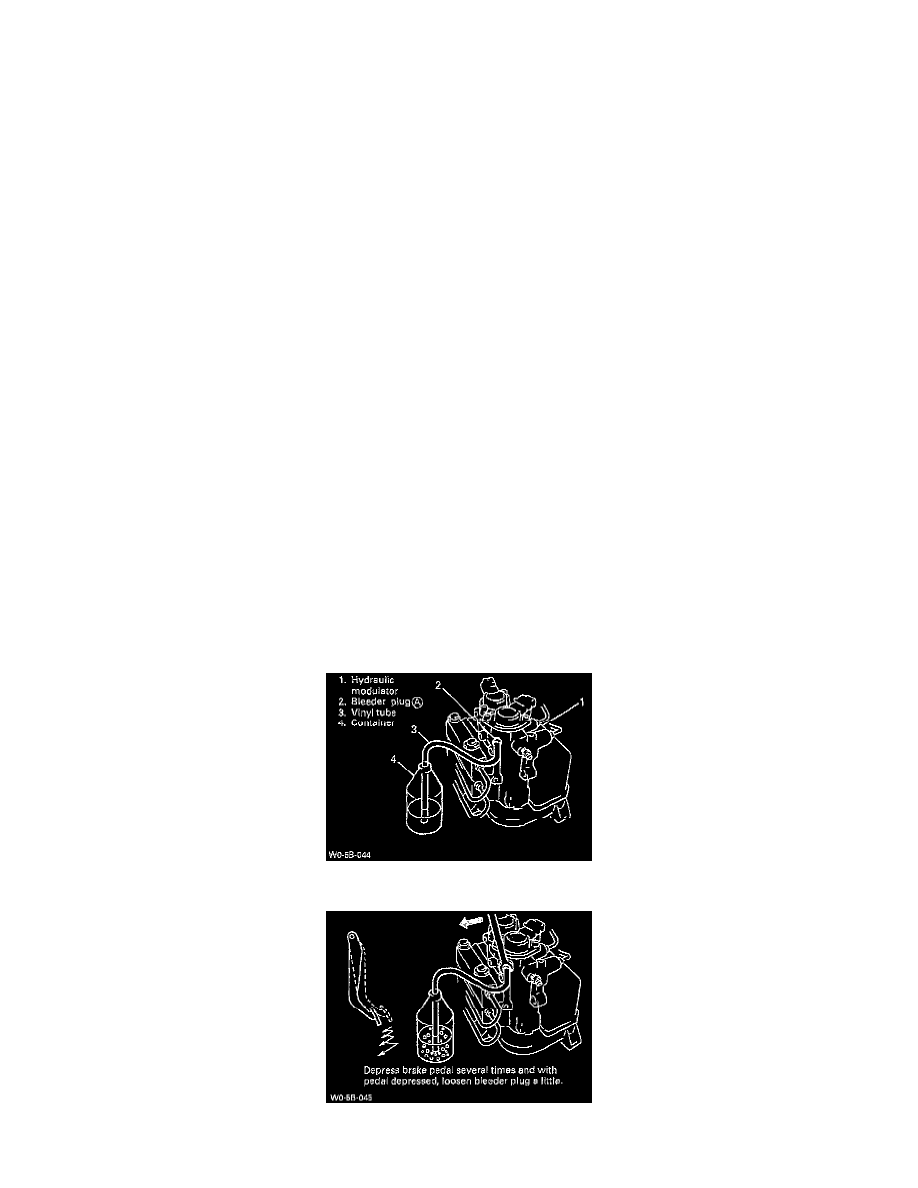Swift L4-1298cc 1.3L SOHC MFI (1997)

Brake Bleeding: Service and Repair
With ABS
WARNING:
^
Brake fluid may irritate eyes and skin. In case of contact, take the following actions;
^
Eye contact - rinse thoroughly with water.
^
Skin contact - wash with soap and water.
^
If ingested - consult a physician immediately.
CAUTION: Brake fluid is extremely damaging to paint. If fluid should accidentally touch painted surface, immediately wipe fluid from paint and clean
painted surface.
GENERAL INFORMATION
Bleeding operation is necessary to remove air whenever it entered hydraulic brake system. Hydraulic lines of brake system are based on the
diagonal split system. When a brake pipe or hose was disconnected at the wheel, bleeding operation must be performed at both ends of the line of
the removed pipe or hose. When any joint part of the master cylinder or other joint part between the master cylinder and each brake (wheel) was
removed, the hydraulic brake system must be bled at all 4 wheel brakes.
PRECAUTIONS FOR BLEEDING BRAKES
Prior to bleeding brakes, front and rear displacement, cylinder pistons must be returned to top-most (home) position.
NOTE: If DTCs are present, vehicle must be repaired and DTCs cleared before performing the motor rehome function as shown procedure
below.
^
Raise and suitably support front end of vehicle so that the drive wheels are off the ground.
^
Start the engine, engage the transaxle and run the vehicle above 5 km/h (3 mph) for at least ten seconds.
^
Observe the "Antilock Brake System (ABS)" indicator. Make sure that the indicator goes out after approximately three seconds.
-
If the "ABS" indicator remains illuminated, a TECH-1 must be used to diagnose the malfunction.
-
If the "ABS" indicator goes out and stays off, stop the engine and repeat Steps 2 and 3.
^
Using a TECH-1, enter the manual control function and "Apply" the front and rear motors.
BLEEDING PROCEDURE
NOTE: In the following procedure, use a suitable container and/or shop cloths to catch brake fluid and prevent it from contacting any painted
surfaces.
1. Fill master cylinder reservoir with brake fluid and keep at least one-half full fluid during bleeding operation.
2. Attach a vinyl tube to bleeder plug (A) of ABS actuator assembly and insert the other end into container.
3. Depress brake pedal several times and then while holding it depressed, loosen bleeder plug (A) about one-third to one-half turn.
